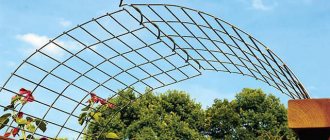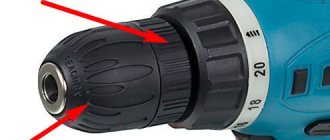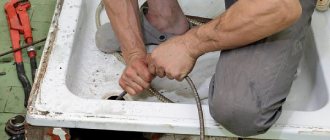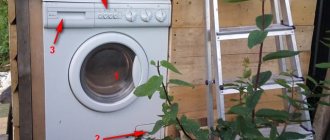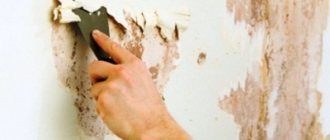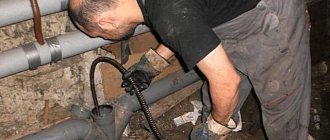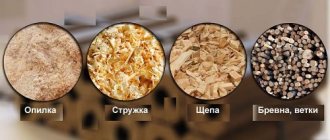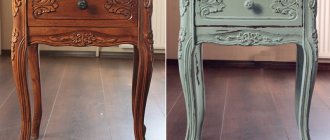Manufacturing of bent channel
Published on July 20, 2013 Category: Mechanics |
2 comments The production of double sequential “V”-shaped flexible bent channel on sheet bending machines (press brakes) from rectangular sheet blanks is one of the most widely used technologies for single and small-scale production.
. bent profiles in mechanical engineering and construction.
In this short article we will briefly look at the technological process of manufacturing a bent channel and perform calculations in Excel of some important, in my opinion, technological dimensions.
The manufacturing technology of a bent channel is shown in four figures below.
1.
Place the workpiece by pressing it against the working surface of stop No. 1.
2.
Press the pedal of the sheet bender and make the first bend.
3.
Let's reinstall the semi-finished product by pressing it against the working surface of stop No. 2.
4.
Let's press the pedal of the sheet bender - make the second bend - the channel is ready!
Corner bending methods
Several basic methods are used to obtain structures of a given shape and profile from a metal corner, namely:
- cold bending,
- hot bending,
- shaping by cutting, bending and welding the finished product.
Cold bending of a metal corner, in turn, is divided into:
- free bending is when the corner is bent without the use of special equipment;
- bending using a rolling mechanism on a specialized profile bending machine.
The use of cold bending of a metal corner, unlike other methods, has certain advantages, namely:
- this is the least expensive method of giving metal a given shape, and does not require the use of additional equipment for heating, cutting, welding and subsequent processing of the metal;
- the resulting frame has greater strength, since it eliminates possible defects characteristic of heating, cutting and welding;
- finished structures are guaranteed to last longer due to the fact that the integrity of the metal profile structure is preserved during processing;
- the likelihood of metal corrosion occurring over time is reduced.
Protection against ovalization
The main methods of cold bending a galvanized pipe involve measures that allow the workpiece to be bent while preserving the shape of its cross-section as much as possible. Typically one of two methods is used for this:
- The use of measures to preserve the shape of the section from the inside (use of an internal limiter).
- Using an external stop to prevent expansion of the side walls.
Rigid materials as fillers retain their shape better, so they are used more often. But thanks to the use of elastic fillers, less stretching of the outer surface of the bend occurs.
Bend a corner radius
Bending a metal corner along a radius is a rather complex technological operation, since any bending is a simultaneous compression of the inner and stretching of the outer layer of metal, and, in the case of a profile in the form of a corner, such processes cannot proceed evenly, which will be accompanied by an attempt to longitudinally displace one from these layers.
Directly for a metal corner, two main methods of bending in the profile plane are used - this is when one of the shelves lies in a vertical plane, and the other in a horizontal one, and its bending will be:
- inside the radius of curvature of the deformation, in which case it will be greatly compressed,
- outside the radius of curvature of the deformation, accordingly, it will stretch.
Cold bending of a metal corner using the rolling method on special profile bending equipment allows you to bend both a steel corner and an aluminum profile, thereby obtaining products of almost any radius with an ideal shape.
You can see how to bend a corner along a radius with your own hands in this video.
It is worth keeping in mind that for both hot and cold bending methods there are maximum radius values that directly depend on the size of the corner flanges and its thickness. So, you can simply calculate the radius by which it is permissible to bend a corner, according to the following values:
- the permissible radius for an equal-flange corner must be a minimum of 45 times the width of the shelf;
- for an unequal-sided profile, the permissible radius cannot be less than 45 times the width of the shelf for a larger shelf and 50 for a smaller one.
But it is better and easier to be guided by the values given in the tables.
Tables of the minimum permissible bending radii of steel angles depending on the type, size and ratio of the shelves
Overview of species
Those who install various metal structures need to use a profile bender. Now it has become fashionable to install beautiful greenhouses made of metal profiles on your site. They are reliable. Therefore, for greenhouses, canopies (arched), namely for their manufacture, a manual profile bender is quite suitable. It is small and can be installed in any room intended for various construction works.
To bend profiles with tension, you can use a machine that operates on the principle of the PGR-6 machine. This product has a stretching mechanism designed for bending aluminum alloys along contours that are not closed. In a profile bender, the number of rolls plays a major role. The simplest design consists of 2 rolls. Such models are used for very light work.
The number of rolls and versatility determines what type a particular machine can belong to. Some rolling products can rotate rolls only in one direction, while others can rotate rolls in both directions at once. Therefore, in the first case, the machines are not called reversible, but in the second - reversible.
Consider, for example, a three-roll roll forming machine with hydraulic movement of the top roll. In it, the profile is fixed between the rolls. All of them have hydraulic engines and attachments (suitable for any cross-section). The required radius is ensured here using a hydraulic drive. Therefore, these products are in good demand where a machine is needed for the production of simple products.
Using profile benders of different directions, you can make various configurations from metal that differs in radius. They are capable of producing parts of various curvatures with both asymmetrical and symmetrical contours. In more detail, profile benders have the following types.
- Pneumatic profile benders operate using pneumatics.
- There are hydraulic profile benders.
- There are also manual, mechanical and electromechanical profile benders.
By placement method
Profile benders are placed on different flat surfaces. Too large specimens are installed on the floor in a spacious room. Due to their enormous weight, they can only be used in workshops. Such models have an electric drive and operate from the network. Other specimens must be secured using special devices to prevent their involuntary movement. This category of machines is intended for work both on an industrial scale and for individual use. Industrial machines are used for bending where large-scale work takes place. So, there are mobile machines, and there are stationary ones. Each of them has either manual or automatic material feeding.
In most cases, specialists use manual profile bending machines. Some people make them with their own hands. This option is quite affordable. But there are also disadvantages. For example, it is inconvenient to perform several bends on one profile at once. It is also difficult to work with such products due to the heavy load on a person. In addition, the bending time increases and it is impossible to control the bending radius.
By drive type
Roll benders are classified as follows.
An electric profile bender, when compared with a manual one, can operate at a fairly high speed. It is also distinguished by the accuracy of its work. Using such a device, you can bend very strong metal products. It can process any types of profiles, even such as I-beams and round products.
How to bend a corner into a ring with your own hands
To do this, it is best to use the hot method of metal processing. But you can achieve a given radius only with the help of a pre-prepared template. We preheat the metal and begin to bend the template evenly, while the horizontal shelf must be adjusted during the entire bending process using a sledgehammer or hammer, otherwise the shelves will not maintain the original angle of 90 degrees to each other.
It is necessary to heat the metal to half the value of its melting point, so, for example, an aluminum corner will have to be heated to at least 250⁰ C, and a steel profile - to 600⁰ C. To do this, you will need a natural gas burner or a gasoline blowtorch, and it is best to use welding acetylene cutter if the corner is large.
Using an angle grinder and a welding machine, you can also bend a steel corner into a ring, but for this you need to make fairly accurate calculations, mark and outline the sectors to be removed, bend and weld the seams. Unfortunately, no matter how hard you try, in this case you will end up with a circle in the form of a rounded polyhedron.
At 90 degrees
Almost all buildings have a rectangular shape, so the most common action with corners is the need to bend them at 90 degrees.
Bend the corners 90 degrees for the future frame is quite simple. First you need to make a development in the place of the future fold. To do this, mark two corners on one of the shelves in different directions from the normal, 45 degrees each, and cut them out with a grinder. Carefully and slowly bend the corner and weld the cut area using electric welding; it is recommended to preheat the bend area so that the second shelf does not crack or break during bending.
Acceptable design dimensions for correctly marking and bending metal corners at 90 degrees are shown in the table:
Today, many DIYers use aluminum for almost everything. Its characteristics allow it to be used without any problems for furniture, for creating garage accessories, etc.
Tsvetprokat aluminum corner offers to purchase on the most favorable terms. This publication will describe various techniques that will make it possible to bend aluminum without damaging it. If you start bending an aluminum part mechanically, cracks may appear in the metal and the part will simply break at the bending point.
Profile pipe - what is it?
A type of rolled metal - a profile pipe of rectangular or square cross-section is in the top sales of steel structures.
The appearance of professional pipes differs from their “neighbors in the workshop” round metal pipe products by having a rectangular or square cross-sectional shape. According to their structural structure, profiled pipe products are linear hollow products with wall thicknesses from 1 to 8 mm with different linear cross-sectional dimensions and specific gravity. Due to the specific rectangular shape, four stiffening ribs appear in the cross-section, providing additional strength. This fact explains the increased ability to operate under the influence of impressive static loads and lateral forces. The cavities of square pipes are not intended for filling and transporting liquids and gases.
Load-bearing elements, support beams, and frames for partitions are made from profile pipes.
Main characteristics
Profile pipes are made by welding sheet metal or by rolling on special rolls. The main documents regulating production and sales are GOST standards. In order not to make a mistake and choose the right rolled pipe, it is recommended to familiarize yourself with its main technical characteristics:
- Cross section type. Among the main types of profiles, the most popular are geometric shapes in the form of a square, rectangle or oval. Parameters of profile types are the main classifiers of the general assortment of pipe products.
- Linear dimensions of the section. For rectangular products, the geometric parameters of the cross section are important - width and height, as well as the length of the rolled profile.
- The value of the wall thickness. The indicator affects the scope of application of rolled pipes, the degree of its reliability, the weight of the product, as well as the quality of the design as a whole.
- Specific gravity or mass. The value of this parameter is accepted in many engineering calculations when determining the permissible load of load-bearing structures.
Information table for the assortment of square profile pipes
| Cross-sectional dimensions, mm | Wall thickness, mm | Specific gravity, kg/m |
| 15 x 15 | 1,0 | 0,479 |
| 15 x 15 | 1,5 | 0,707 |
| 15 x 15 | 2,0 | 0,926 |
| 20 x 20 | 1,0 | 0,620 |
| 20 x20 | 1,5 | 0,930 |
| 20 x20 | 2,0 | 1,225 |
| 25 x 25 | 1,0 | 0,793 |
| 25 x 25 | 1,5 | 1,225 |
| 25 x 25 | 2,0 | 1,554 |
| 30 x 30 | 1,0 | 0,942 |
| 30 x 30 | 1,5 | 1,401 |
| 30 x 30 | 2,0 | 2,296 |
| 40 x 40 | 1,0 | 1,24 |
| 40 x 40 | 1,5 | 1,849 |
| 40 x 40 | 2,0 | 2,447 |
| 50 x 50 | 1,0 | 2,34 |
| 50 x 50 | 1,5 | 3,10 |
| 50 x 50 | 2,0 | 3,66 |
| 60 x 60 | 1,0 | 2,8 |
| 60 x 60 | 1,5 | 3,72 |
| 60 x 60 | 2,0 | 4,63 |
- Tabular data is used to determine an important indicator of the specific gravity of 1 linear meter of pipe.
Using a homemade rolling machine
A homemade machine can be made from everything you have at hand:
Everything, of course, depends on the dimensions of the aluminum profile itself, as well as on the required bending radius. Such homemade machines allow you to achieve very positive results, in principle, without heating the part.
Success is achieved through gradual, slow bending over a large area. As a result, local stresses do not arise in the metal. You can be sure that cracks will not appear.
However, there is an easier way. All you need is a gas burner and large pieces of wood. Initially, it should be noted that you will not get the expected result the first time. To understand the technique, it is recommended to practice cutting the profile.
We use fillers - sand and water
The cavities are filled with water without impurities. Plugs are attached to the ends, then frozen in the freezer or in the cold. Bending is carried out after heating with a gas burner. The procedure cannot be used for products with galvanized coating, otherwise it will be damaged.
This option is suitable for products with a large cross-section or with a square configuration. If you need to bend it at a slight angle, it is better to use sand as a filler. After thorough heating over the entire surface, the part is bent by tapping with a mallet. Galvanized structures are bent without heating.
Important! When filling a cavity with loose filler, it must be compacted so that the internal space is filled without voids. When closing the plug, a reserve is left so that it is easier to remove at the end of the procedure.
Profile bending with a gas torch
Using a gas torch, it is necessary to heat the aluminum profile exactly at the bending point and next to it. The main heat of the flame should be concentrated at the point of bending.
After the required temperature has been reached and the profile has become noticeably more plastic, a steel metal pipe of suitable diameter is applied to the bending metal. Strictly speaking, its outer diameter will be equal to the bending diameter of the aluminum profile.
It is necessary to work with thick gloves, as the metal becomes very hot. Leaning the pipe against the profile, we begin to carefully bend it. Apply jerky, soft movements (you don’t have to constantly pull the profile to bend).
We watch the place of bending. If we see a change in color, continue heating with a gas burner. The final result will be achieved much faster than using homemade rolling machines.
The video demonstrates how you can bend an aluminum profile at home:
Metal landing.
Sheet metal bending, called upsetting, is used in cases where one sheet must overlap the edge of another sheet (Fig. 1).
Bending spring
All masters know about this method. Its essence is as follows: a special square spring made of steel wire is placed inside the pipe in the place where it is necessary to obtain a bend. The spring will serve as a mandrel; its cross-section should be 1-2 millimeters smaller than the internal cross-section. Using a blowtorch, the place of further bending is heated, applied to the blank with a suitable bending radius and, using force, not sharply pressed until the desired curvature is obtained. This method is quite simple, but when using it when carrying out work, it is recommended to carefully observe safety precautions: work in special gloves and use pliers.
